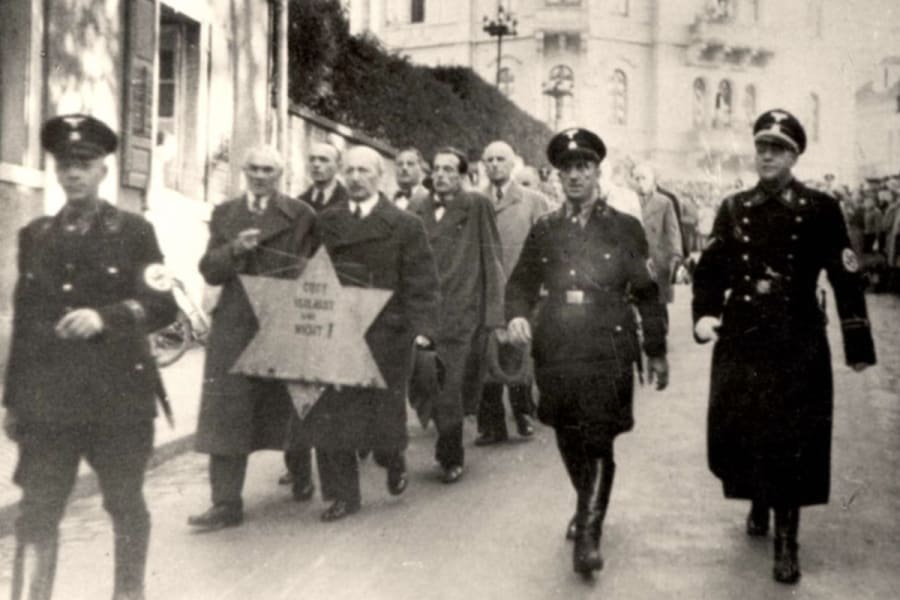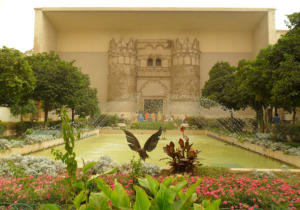On 87th anniversary of Kristallnacht, Holocaust survivors warn current antisemitism comparable to 1938

As the world marks the 87th anniversary of the Nazi-perpetrated Kristallnacht, Holocaust survivors warn that the levels of antisemitism in the post-Oct. 7 era are comparable to the pre-Holocaust Jew-hatred in 1938.
"We live in an era equivalent to 1938, where synagogues are burned, and people in the street are attacked," the 101-year-old Holocaust survivor Walter Bingham warned in an interview with the Associated Press. He was 14 years old when Nazi mobs plundered and destroyed Jewish shops and synagogues in Germany and Austria during the Kristallnacht, also known as the “Night of Broken Glass.”
Ninety-one Jews were murdered during the antisemitic atrocities when the Nazis set fire of over 1,400 synagogues and vandalized 7,500 Jewish businesses. Some 30,000 Jewish men were arrested and sent to concentration camps.
Bingham, who was saved through the Kindertransport rescue mission from Germany to England in the late 1930s, was separated from his parents, who perished during the Holocaust.
"Antisemitism, I don't think, will ever fully disappear because it's the panacea for all ills of the world," Bingham assessed.
The 94-year-old Holocaust survivor George Shefi has shared his experiences of antisemitism as a young child in Berlin with more than 12,000 students across Germany. While emphasizing that the younger generation of Germans is not responsible for the crimes of their grandparents, he maintains that they nevertheless have a responsibility to ensure such anti-Jewish atrocities never happen again.
The 87-year-old Holocaust survivor Paul Alexander was sent as a year-old infant in 1938 with the Kindertransport to England.
"It was because of Kristallnacht ... that the Jewish people in England decided that they must save Jews, families from Germany and get them out as quickly as possible," Alexander explained.
"I was sent out on the Kindertransport in July 1939, exactly six weeks before the war broke out" he continued. "So it was because of Kristallnacht that I was lucky and fortunate to escape from Nazi Germany."
Despite the similarities between contemporary Jew-hatred and antisemitism in the 1930s Bingham emphasizes that there are also significant differences.
"In those days, the Jewish mentality was apologetic," he recalled. "Please don't do anything to me, I won't do anything to you," Bingham added. He stressed that the Jewish state has dramatically transformed the Jewish people.
"Today, we have, thank God, the state of Israel, a very strong state," he explained "And whereas antisemitism is still on the increase, the one thing that will not happen would be a Holocaust, because the state will see to it that doesn't happen."
Some six million Jews were murdered during the Holocaust years from 1939 to 1945. Israel’s Yad Vashem Holocaust Memorial in Jerusalem recently announced that it had identified the names of five million Jewish Holocaust victims.
Yad Vashem Chairman Dani Dayan assessed that the identification of millions of Holocaust victims constituted “both an achievement and a reminder of an unfinished obligation.”
“Behind every name lies an entire life: a child who never grew up, a parent who never came home, a voice silenced forever. Our moral duty is to ensure that every victim is remembered and that no one remains anonymous,” Dayan vowed.
There are currently only 200,000 remaining Jewish Holocaust survivors and their numbers are dwindling due to their advanced age. A report in April predicted that 70% of the remaining Holocaust survivors would be gone in the next decade. This has resulted in a growing focus on Holocaust education among the young generation.
"What we have to do ... in addition to education, is to actually, literally, fight," Bingham said on the issue of Jew-hatred; " If we see it, we have to hit back."

The All Israel News Staff is a team of journalists in Israel.
You might also like to read this:

















